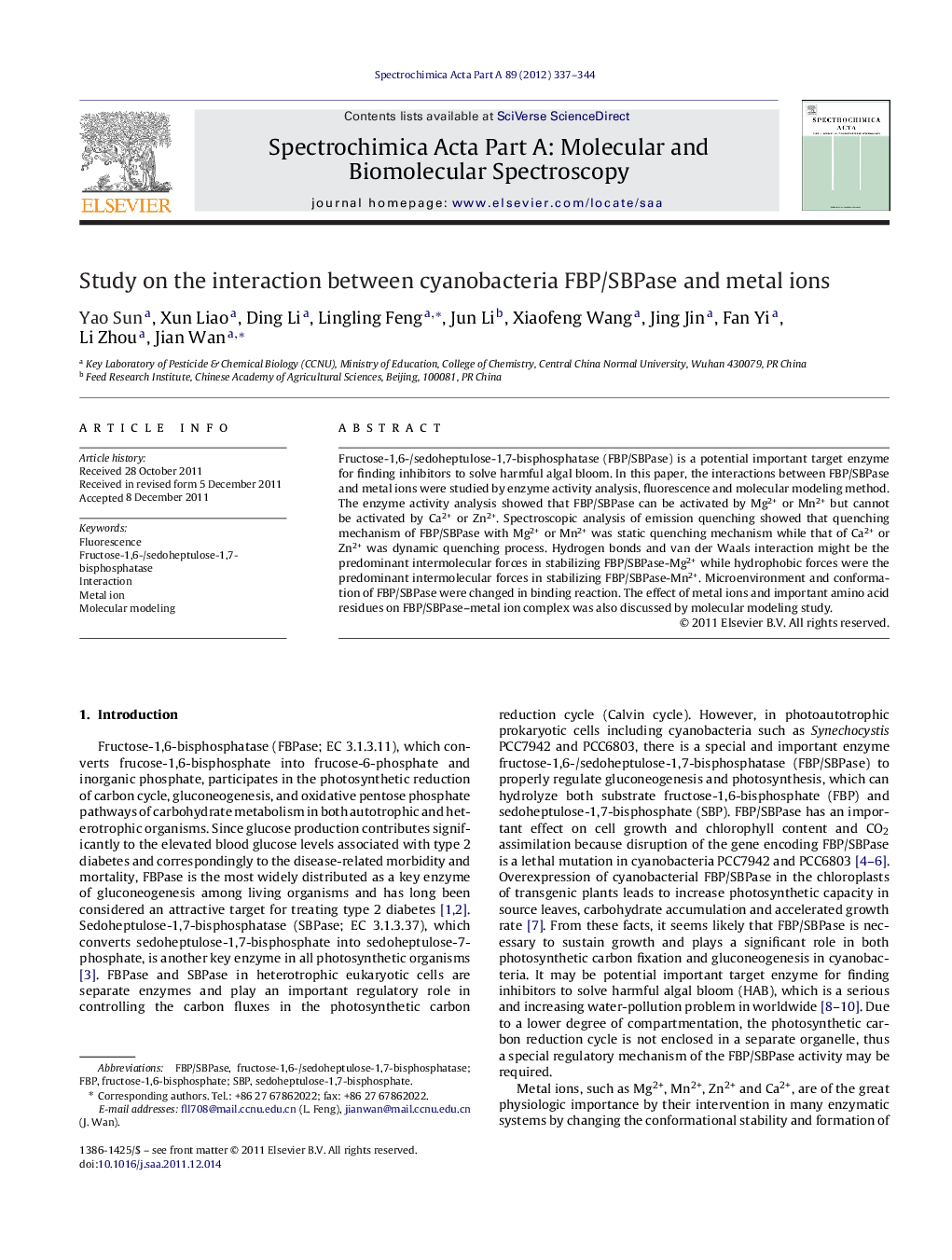| Article ID | Journal | Published Year | Pages | File Type |
|---|---|---|---|---|
| 1234689 | Spectrochimica Acta Part A: Molecular and Biomolecular Spectroscopy | 2012 | 8 Pages |
Fructose-1,6-/sedoheptulose-1,7-bisphosphatase (FBP/SBPase) is a potential important target enzyme for finding inhibitors to solve harmful algal bloom. In this paper, the interactions between FBP/SBPase and metal ions were studied by enzyme activity analysis, fluorescence and molecular modeling method. The enzyme activity analysis showed that FBP/SBPase can be activated by Mg2+ or Mn2+ but cannot be activated by Ca2+ or Zn2+. Spectroscopic analysis of emission quenching showed that quenching mechanism of FBP/SBPase with Mg2+ or Mn2+ was static quenching mechanism while that of Ca2+ or Zn2+ was dynamic quenching process. Hydrogen bonds and van der Waals interaction might be the predominant intermolecular forces in stabilizing FBP/SBPase-Mg2+ while hydrophobic forces were the predominant intermolecular forces in stabilizing FBP/SBPase-Mn2+. Microenvironment and conformation of FBP/SBPase were changed in binding reaction. The effect of metal ions and important amino acid residues on FBP/SBPase–metal ion complex was also discussed by molecular modeling study.
Graphical abstractFigure optionsDownload full-size imageDownload as PowerPoint slideHighlights► We firstly present a detailed exploration of interaction between metal ions with cyanobacteria FBP/SBPase. ► FBP/SBPase can be activated by Mg2+ or Mn2+ by static quenching mechanism. ► Hydrogen bonds and van der Waals might be the predominant forces in stabilizing FBP/SBPase-ion2+ complexes. ► The effects of Mg2+ and Mn2+ on FBP/SBPase were due to the change of different α-helix or loop area.
